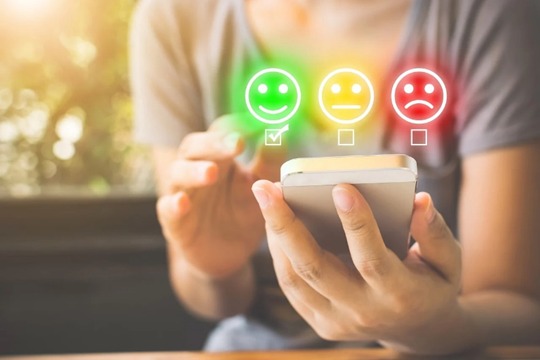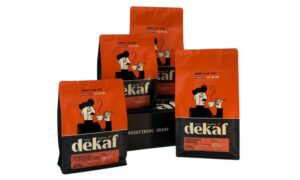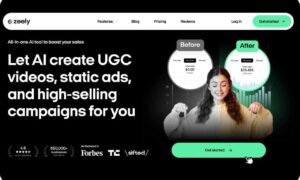As AI is slowly incorporating itself in our everyday lives and reshaping the way we interact with technology and make decisions I can’t help but wonder what impact it has on user behaviour. Let’s dig in research results and user reviews.
How is AI impact on user behaviour evaluated?
While AI was rising, researchers took the TAM – Technology Acceptance Model and made it into Extended Technology Acceptance Model to evaluate users and use the results to predict future behaviour.
Factors included in TAM:
- Perceived Usefulness: How much the technology helps improve tasks or performance.
- Ease of Use: How simple is to use AI technology.
- Social Influence: How much others encourage or expect the person to use the technology.
- Trust: Belief that the technology is reliable and safe to use.
- Support and Tools: Availability of resources and support for users to use the AI technology effectively.
Improved Customer Interaction
Everyone likes to get some help while exploring something new so AI made this possible by introducing AI chat bots and virtual assistants. According to research by Gkikas and Theodoridis users reported this sort of interaction has enhanced their engagement and therefore boosted their overall experience and satisfaction with the services or products they are using.
Decision making is easier
With so many choices present in all aspects of everyday life, it can be hard and tiresome to choose what you need. So once again AI comes in to make our lives easier as reported by users in the study above. AI analyzes data for us and narrows it down for us so it is easier for us to make decisions and carry on with tasks. The study highlights that personalized guidance boosts user satisfaction by making consumers feel understood and appreciated.
Predictive Analytics
This feature is closely related to improved decision making, because AI algorithms look at what you’ve bought, searched for, or liked before to suggest things you might want. The study reveals this is something that makes regular users satisfied and happy, and companies as well because using predictive analytics, they can send the right offers at the right time, boosting engagement and building customer loyalty.
Personalized Recommendations
Spending time watching Netflix has become much easier these days as well, as AI gives us options according to our past selections and preferences. Netflix is just one example of this, this is present in other industries as well like e-commerce where selection is made easier and faster. Again, this all leads to users feeling content and loyal to the provider of services.
Is it really all so good?
In the study, consumers also reported privacy concerns as one of the factors influencing their behaviour. Even though getting personalized choices is convenient, it often requires access to sensitive data such as purchase history, browsing behavior, and even real-time location. This level of data collection raises questions about how securely this information is stored and used, creating potential barriers to trust. Also, there is a dose of skepticism because users usually are not familiar with how AI algorithms work or how their data is being collected.
User Expectations: Then vs. Now in the Age of AI
One Year Ago: AI as help
- AI features such as auto-complete, chatbots, and personalization were considered helpful, improving user experience without taking full control.
- AI was used to automate tasks that are repeating, and in that way increasing efficiency.
- Tools like ChatGPT were beginning to gain attention, mostly used for creating content and supporting customers.
- AI-powered analytics assisted businesses in analyzing data, though human review remained essential for key insights.
- Discussions around AI ethics and transparency started to develop.
Now: AI as a Core Functionality
- AI is expected to be deeply included into software, not just as an addition.
- AI agents are more and more replacing traditional interfaces.
- Users expect personalized experiences across all digital platforms.
- Trust and transparency are now bigger concerns for users .
- Tools like ChatGPT gained more popularity and are used in various industries.
- Users are much more dependent on AI in all aspects of their personal and professional lives.
What can we do to keep up with new demands in the age of AI?
When I say we, I mean idea creators, design agencies, and those in charge of accelerating new software for users. There is not much really what we can do about but keep up and adapt our strategies. Since users expect personalization, include AI-driven recommendations based on their behaviour but allow users to adjust personalization settings to stay in control.
Regarding trust and transparency, you can offer explanations for decisions based on AI (e.g., “This recommendation is based on your past purchases”).This would make things clear for users who are having issues with it, and increase their trust. Furthermore, adding clear UI elements to indicate AI response can help them understand how AI makes decisions.
Final Word
AI is transforming user behavior by making decision-making easier, enhancing interactions, and offering personalized experiences. However, as AI becomes a core part of daily life, users expect greater transparency, trust, and control over how it operates. While AI improves efficiency, concerns about privacy and data security influence user trust. To keep up, designers and product creators must ensure AI-driven features are explainable, customizable, and ethically designed. Balancing convenience with user control will be essential in shaping a future where AI enhances experiences without compromising trust. At the same time, businesses and creators leveraging AI must also focus on visibility and engagement, using strategies like boost instagram to strengthen their online reach. A well-optimized social presence helps build credibility, ensuring AI-powered innovations gain wider acceptance and user confidence.




































